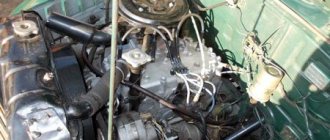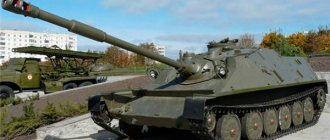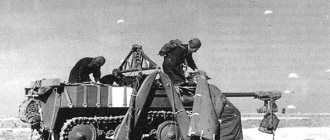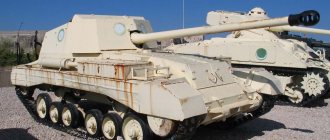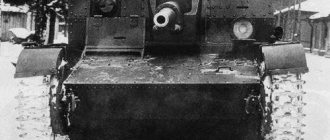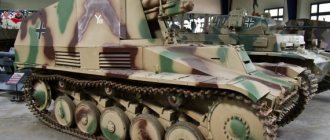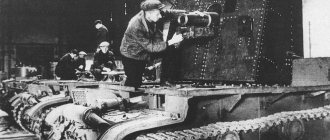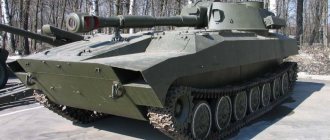The GAZ 69 engine is a legendary car of the Gorky Automobile Plant, which laid the foundation for the no less legendary series of UAZ cars, nicknamed “Bobik,” which were especially popular with the police of the USSR and later the CIS countries. The engine of the legendary “Kozlik”, which was the popular name of the 69th Gazik, had a fairly simple design and was quite durable.
Engines installed on GAZ-69
Soon the UAZ-469B car went into production, and since
Since the new car was much more dynamic and comfortable than previous models, most GAZ-69 owners began installing UAZ and Volgov engines in their cars. However, among the adherents of more powerful engines, there were also those who were partial to the engine from the UAZ-450. Due to the fact that it had a piston with a diameter of 88 mm, the engine power reached 62 hp.
Engine UAZ-450
I somehow came across such a cylinder block, but pistons and rings for it were in real short supply at that time and I was unable to find them. I must say that the only time I accidentally saw such a rare engine assembled in scrap metal. After such a meeting, I became a little interested in restorers of old equipment, because they find exclusive parts somewhere. There was another engine in the USSR that was chased by Kozlikov lovers and which was valued much higher among foresters and hunters than the Volgovsky. It was a Polish engine from a Nysa car.
Engine from a Nysa car
In its pedigree, this engine had roots from the GAZ M-20 engine, but was modernized by the Poles while maintaining the old dimension and converted into an overhead valve. With an engine power of 70 hp, it pulled like crazy at the bottom and when driving tight, it had absolutely no competitors.
Based on the above, the real contender for me for installation on the GAZ-69 car was the Volgovsky engine from the GAZ-21. However, preparations for the operation to install another engine took time and in my case took a lot of time.
Around the same time, I came across an interesting article about the modernization of production processes and it concluded that it makes no sense to separately reconstruct one workshop in production, because this will not lead to an increase in output throughout the enterprise.
After reading this and thinking a little, it became clear to me that if in my case I installed a more powerful engine, then I would also need to install a gearbox and transmission from a UAZ. Only then will I receive maximum benefit from the planned refurbishment. To put it simply, after the conversion I will have a modern UAZ in the skin of the GAZ-69.
Once again about forcing the M20
There will no longer be gasoline less than AI-92. It is a fact.
And that the use of 92 in the M-20 is fraught with breakdowns - these are mostly myths that travel from mouth to mouth.
Let's analyze it together again. And somehow systematize experience and knowledge.
I. Let's start with breakdowns:
It is believed that 92 gasoline burns more slowly but at a higher temperature, and as it burns out during the working stroke, it overheats the engine, valves and pistons.
So: it burns at the same speed and temperature. But more on that later.
1. Burnout of valves (usually exhaust valves) also happens on 72 gasoline.
There are several reasons:
— Crack in the socket ring. The nest is factory made of white cast iron. And it can crack due to thermal stresses during hardening, crooked pressing, etc. In case of overheating when releasing smoke with unburned fuel, or a hanging or poorly ground valve.
— Our gas cars don’t drive every day. This is now a seasonal car. For daily use, I think everyone has another passenger car. So... during a long period of inactivity, the valves in one of the cylinders remain open... soot, deposits of all sorts dry out on them, etc. (particularly attentive drivers may have noticed at the first start a knocking sound of increased valve clearance, which soon disappears). So this garbage, having low thermal conductivity, does not allow the temperature to be transferred from the heated valve to the water-cooled block... which is why a spot burnout is formed, which can develop into a significant one. This effect is enhanced by driving at high speed after starting...
— Poor (paradoxically!!!) working mixture. Since a lean mixture burns about a third slower, and residual oxygen from the air, breaking through the micro-cracks with the flame, produces the effect of oxygen cutting.
2. Piston burnout:
— Seizures on the piston, which occurred for various reasons (we’ll talk about them separately a little later), compress the grooves of the piston rings... the rings lie under... and when some mechanics place the locks on the side of the manifold (the piston is pressed there during the power stroke)... we can get a complete seal. The ring stops sealing the cylinder and the same oxygen cutter effect occurs as with the valves.
— occurrence of rings. The reasons are the same. Infrequent driving, untimely oil changes, engine operation without warming up, etc.
Dear readers, you yourself can name several more reasons for breakdowns.
And where is the fault of 92 gasoline. I do not see. It’s like feeding a homeless person servilat instead of livery... the effect is the same, only more expensive.
II. Engine conversion for 92
1. What do we want to achieve by increasing the compression ratio? The compression ratio is increased to increase the combustion rate of the gas-air mixture (DHW). And this, in turn, will increase the maximum engine speed and power. Notice the power that increases due to revolutions. The torque does not change... because at the beginning of the power stroke, already in the first millimeters, the effect of a small combustion chamber has already been neutralized.
It is impossible to increase the maximum speed of the M20 with any modifications for the following reason - it is long-stroke. And with long strokes, all other things being equal, the speed of the piston is already high. At 3600 rpm it is 12 m/s. (Permissible speeds are 10 - 15 m/s and depend on the design features of the engine). When the critical speed of the piston is exceeded, the aluminum alloy of the piston melts... and scuffing occurs - burnout.
Previously, oils were worse, you say?
Yes. Certainly. But... previously they did not hesitate to add copper (the most extreme pressure component) to the pistons. Our current pistons do not have copper. (The alloy is sometimes written on the bottom of the piston on the reverse side. See for yourself.)
The burning speed of a lean mixture is 14 m/s, normal is 21 m/s, and a rich mixture is 15 m/s.
I think it’s much more effective not to mess with the cylinder head, but to work on the right carburetor, which provides the optimal mixture in each mode, including a lean mixture at medium speeds and low load. (everyone notices how responsive the M20 is to replacing and adjusting carburetors... there’s power, traction, and efficiency here.) It may make sense to use solenoid valves in different modes of the carburetor and two-chamber carburetors.
Reworking the camshaft and changing the valve timing also makes sense and the difference is noticeable only at high speeds. Proper mixture formation also replaces this.
You can try to install a single injection, but who will undertake to program the controller (of course, it won’t fit perfectly on any car. Although it will work.).
2. Engine durability. On the page of one winner (I can’t find it anymore), it’s written about the groove in the connecting rod bearings... I fully support him. They don't have enough oil.
Sodium valves are overkill. I don't remember the valves getting stuck. If you don’t change the oil every 50 thousand km, the sodium will hang.
Replacing the oil pump with a higher capacity is very desirable (everyone chooses the method for themselves).
But the oil filters, and perhaps the very principle of the oil system (in terms of filtration and cooling), should be changed to a modern one, may the “museum curators” forgive me. But this is a separate topic.
Conclusion: The correct ignition angle, the correct carburetor, careful maintenance - that’s all the modifications for 92 gasoline.
PS I wanted to write about the combustion features and detonation of different gasolines, but I changed my mind. I took advantage of women's right No. 1.
Tuning the GAZ M-20 engine
Many can argue that it would be easier to simply boost the GAZ M-20 engine and there is no point in bothering with it. However, I already had experience in engine tuning and the results were not encouraging.
Engine GAZ M-20
When I returned from the army, I tried to boost the original GAZ-69 engine and to do this I milled the cylinder head so that the valves did not rest against it.
I also pressed out the exhaust valve guides and sharpened them to accommodate the thicker valve stem from the PAZ engine. Next, I drilled the sockets and ground the valves.
They installed PAZ exhaust valves because they had a sodium filler and did not burn even with 76 gasoline. However, the problem was that finding them was extremely difficult.
After carrying out the work described above, the valves stopped burning, and the engine noticeably increased in traction and on a straight road could accelerate the car to 110 km/h. My tuned engine lasted about 15 thousand km, after which water started to flow into the sump.
An autopsy showed that the engine block from the exhaust valve to the cylinder liner had burst and could no longer be repaired. Unfortunately I no longer remember the cylinder number. This experiment forever discouraged me from boosting engines.
True, I once put a triple shaft into a cheap engine, but there were special factory connecting rods and this Zhiguli engine ran without any complaints.
Interior options
Gas 69 was offered for sale with several interior options. They differed in the number of seats and the presence of an awning. Thus, the main modifications 69 and 69A had a removable awning mounted on a metal frame. Otherwise, all models were almost identical. In front of the driver were the main pointer indicators, including the speedometer. The front panel is made of metal, painted in body color. A handle is installed opposite the passenger seat.
The interior heater supplied heat using a fan only to the windshield. To warm the feet and passengers, it is necessary to open the air intake under the hood while driving. But this is not enough, so in winter it is very cold in the Gas 69 cabin. Today, many car enthusiasts buy used Gas 69 and completely redo the interior.
The basic version provides space for eight people, of which two (driver and passenger) are in the front. The rear benches can be folded, and underneath there are tool boxes. If necessary, you can even install a stretcher with a wounded person inside the car. For comparison, 69A is already designed for five seats. In this case, it will not be possible to get from the passenger compartment to the luggage compartment.
Selection of spare parts
In general, I decided to abandon boosting the GAZ M-20 engine and install the Volga GAZ-21 engine on my GAZ-69.
Slowly, I found a 4-speed gearbox from a UAZ, and then a transfer case from a Bukhanka. I couldn’t find the plate from the UAZ-469B, which is placed between the gearbox and the steering wheel. However, I came across the same one from Bukhanka, but it was a little narrower than the UAZ one. Also, I found four engine mounting mounts from UAZ or GAZ-51, because... they were practically the same. I took four spare sheet metal plates and adjusted the large holes of the engine mounts to them. In a word, I assembled everything and just waited for some unit to fail.
Question - semi-offtopic adjustment of valves on the lower valve Rating:
#1 0000
- Supreme shaman
